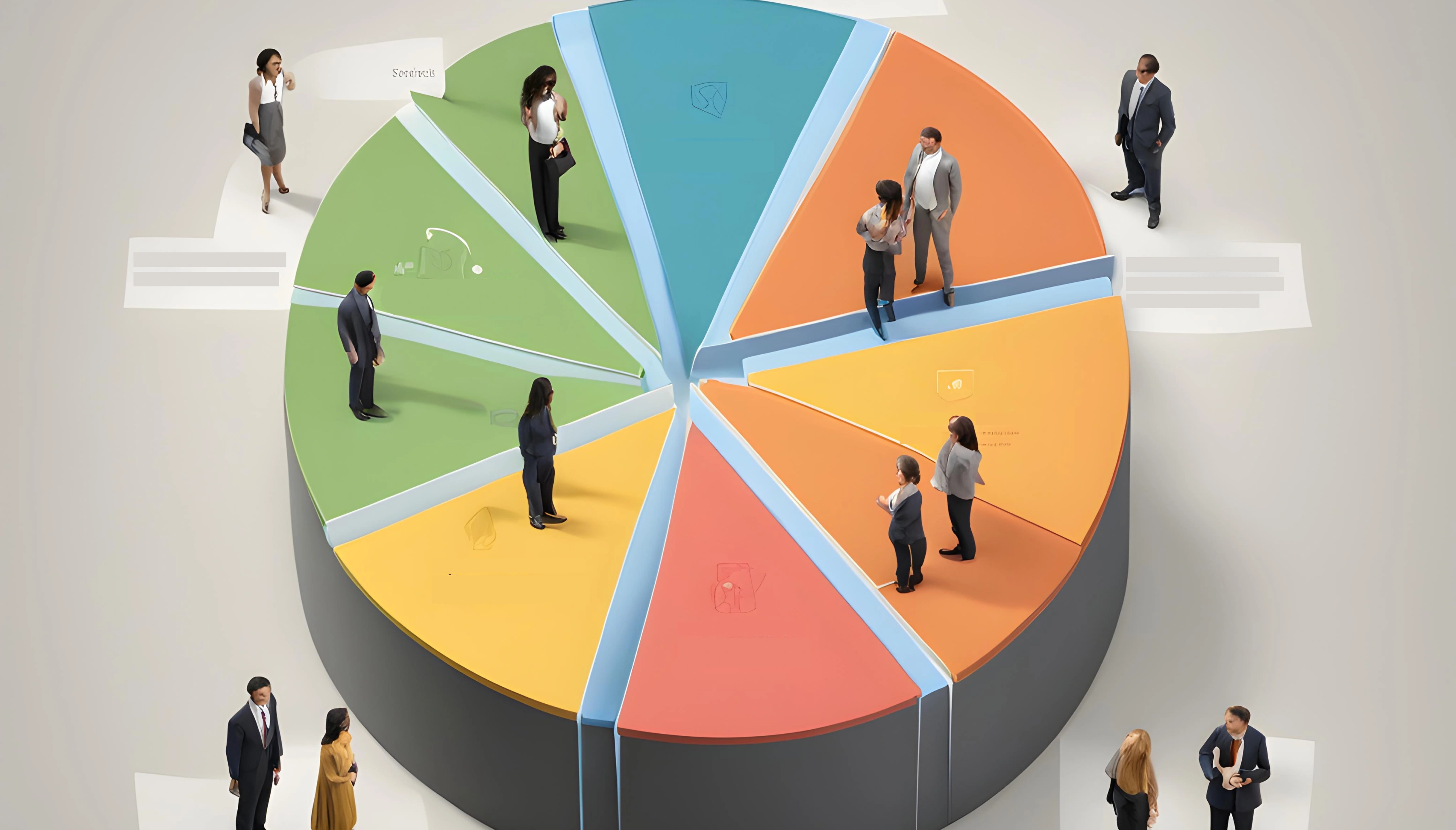
Oct 23rd, 2023. 20 mins read

Imagine yourself as an experienced detective tasked with solving a complex mystery. The clues are scattered throughout a sprawling city, and each clue represents a piece of the puzzle, shedding light on the truth.
Now, picture yourself investigating this mystery without any prior knowledge of the case. It's like entering the city with your eyes closed, not knowing where to start, which leads to follow, or who the key suspects are. The result? A case that might remain unsolved, with critical clues overlooked.
Having a seasoned informant would be a perfect confidential source who knows the city's secrets inside and out. It guides your investigation, revealing where to look for clues, which suspects to question, and how to connect the dots to unravel the mystery.
In the world of design, market research acts as your investigative partner. It helps you create user experiences that uncover the mysteries of your audience's needs and desires. With market research as your informant, your design journey becomes a thrilling pursuit of understanding, leading to user-centric solutions that satisfy every case.
Let’s explore five of the most effective market research methods for creating super-powerful personas:

Market Segmentation is like creating a bespoke suit for your personas. It's the art of dividing your target market into distinct, well-fitting segments, allowing you to design personas that resonate deeply with each group.
Imagine designing a mobile app for a diverse audience without considering their unique needs. It's like trying to create one-size-fits-all footwear—some may find it comfy, but many will be left with blisters. Market segmentation helps you design personas that are a comfortable fit for each user group.
The beauty of market segmentation lies in its ability to avoid the one-size-fits-all trap. By understanding your users on a deeper level, you can create personas that feel like old friends, offering solutions that genuinely matter to them.
So, think of Market Segmentation as your designer's sketchbook. It helps you outline the personas with precision, ensuring your designs fit like a glove and deliver a user experience that's not just satisfactory but outstanding.

Competitor Analysis is like playing a strategic game of chess. It's about understanding your competitors' moves, strengths, and weaknesses to position yourself for success. And a powerful weapon for creating personas that hit the bullseye.
Imagine you're building a new mobile app for fitness enthusiasts. Without knowing what other fitness apps are offering, you're essentially running blindfolded in a race. Competitor analysis lifts that blindfold and helps you make informed decisions.
Competitor Analysis isn't about copying your rivals; it's about learning from them. It involves collecting intelligence on your competitors' products, marketing strategies, user feedback, and even their missteps.
As you gather this intelligence, it's essential to categorize and prioritize the information. Just as a chess player studies their opponent's moves, you should focus on what matters most to your personas and project objectives.
By analyzing your competitors, you gain a sharper perspective on your own strengths and weaknesses. You can fine-tune your personas with insights about user choices, preferences, and pain points based on what's happening in the market.
It helps you make savvy moves, ensuring your personas and designs stand out in the competitive arena, ultimately leading to more user-centric and successful outcomes.

Secondary Data Analysis is like treasure hunting in the vast archives of existing information. It's a process where you dig into pre-existing data sources to discover valuable insights. Instead of collecting fresh data, you're harnessing the power of what's already out there.
Imagine you're tasked with understanding the preferences of coffee drinkers in a new market. Instead of conducting costly surveys, you can tap into existing market research reports, online reviews, and social media conversations about coffee brands. This not only saves time and resources but can also provide a wealth of information.
While secondary data is a gold mine of information, the real art lies in how you analyze and interpret it. You must critically assess the quality, relevance, and reliability of the data source. Just as a prospector sifts through gravel to find gold nuggets, you'll need to filter through data to extract the gems that truly matter to your project.
Secondary Data Analysis isn't just about saving time and resources; it's about making informed decisions. By tapping into existing data, you can uncover hidden insights, validate your assumptions, and ensure your personas and designs are rooted in solid information. So, before embarking on data collection adventures, consider exploring the treasures that secondary data analysis can offer.

Trend Analysis is like having a radar on your design ship. It helps you detect incoming waves of change, ensuring your personas and designs remain relevant and ride the crest of current user preferences. In the dynamic world of UX, keeping an eye on trends is the compass to success.
Imagine designing a website with the aesthetic of the early 2000s—vibrant gradients, pixelated images, and clunky interfaces. Without trend analysis, your designs might feel as outdated as a flip phone. Staying aware of trends keeps your designs in tune with the times.
Trend Analysis isn't about blindly following every passing fad. It's about discerning which trends align with your personas' needs and the broader goals of your project.
For example, let's say you're designing a news app targeted at busy professionals. You notice the trend of gamification in news apps, where users earn points for reading articles. However, your personas might value simplicity and quick access to information over gamification. Trend analysis helps you make an informed decision—whether to embrace the trend or maintain a clean, straightforward design.
Trend analysis isn't just about following current trends; it's also about anticipating the next wave. By identifying emerging trends, you can position your personas and designs ahead of the curve.
Consider the emergence of virtual reality (VR) and augmented reality (AR) in recent years. Trend analysis would prompt you to explore whether your personas could benefit from immersive experiences or if it's still too early for widespread adoption.
By staying informed and adaptable, you ensure that your personas and designs remain not only relevant but also appealing and user-centric- after all, it is important to understand the benefits of creating and updating personas frequently.

Imagine having access to a library filled with books about your target market, user behavior, and industry trends. That's precisely what Industry Reports and Studies offer. They're like X-ray vision goggles that allow you to see deep into the heart of your market. In the world of UX, these insights are pure gold.
Consider trying to design a new smartphone app without knowing how the smartphone market is evolving. It's a bit like trying to navigate a maze blindfolded. Industry reports and studies provide the much-needed map to navigate complex market landscapes.
Industry reports and studies are like gold mines, but mining gold isn't just about knowing where to dig—it's also about how you extract and refine it. Similarly, extracting valuable insights from these reports requires a methodical approach.
Consider a scenario where you're designing a travel booking platform. An industry report reveals a surge in eco-friendly travel trends. Armed with this insight, you can tailor your persona's preferences and emphasize eco-friendly options in your design, such as carbon footprint calculators or sustainable travel recommendations.
The real beauty of Industry Reports and Studies lies in the competitive edge they provide. By accessing authoritative data sources, you're not just designing personas and products; you're making strategic decisions based on a deep understanding of the market. This insight can set you apart from competitors and elevate your UX game.
We've uncovered five indispensable tools that illuminate our path as essential data sources for creating effective user personas: Secondary Data Analysis, Competitor Analysis, Market Segmentation, Trend Analysis, and Industry Reports and Studies.
These tools empower us to create personas that resonate, but their true potential is magnified when paired with an ingenious companion— the Persona Mapper.
Persona Mapper isn't just a tool; it's the bridge that ensures the wealth of insights we've gathered doesn't get lost in the vast sea of data. It transforms these insights into one-page persona documents that are not only concise but also incredibly powerful.
With Persona Mapper, we can compare personas side by side, share them effortlessly, and collaborate seamlessly. Armed with these tools and the persona mapper as our guiding star, we're not merely crafting personas; we're architecting exceptional user experiences.
We're making strategic decisions based on a profound understanding of our market, users, and trends. We're at the forefront of UX design, poised for success.
BuildUX is in its final stages to launch internationally. Join the Beta community.